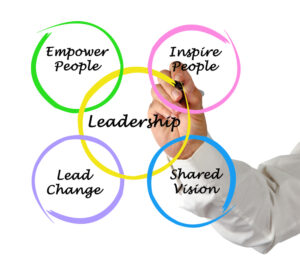 BY KIM LAWTON
BY KIM LAWTON
Now is not the time to scrimp on investing in your remaining teammates.
The media narrative of the Great Resignation often centers around two parties: the 47.4 million employees who gave notice in 2021 and the employers who are scrambling to stem the outflow and backfill open positions. Those employees who remained are now working longer hours with fewer resources and less team support. Unsurprisingly, they’re tired.
It’s never good when a large percentage of employees say they’re disconnected, unmotivated, and unhappy at work, but work-related exhaustion isn’t new. Some workers were disengaged long before COVID-19 held any real meaning. The difference is that employees now have the added stress of a deadly virus, historic inflation rates, and employers who seem more interested in blocking the exit doors than improving the working conditions for people who stayed.
So, what can you do? More than ever, employees are seeking employers who share their values and treat them as individuals. They want to feel seen and heard, and they want to believe that you’re investing in them as much as they’re investing in you. To that end, consider hosting internal events, which help foster a true sense of community. Here’s how to get started.
GIVE EMPLOYEES A SAY
Internal events aren’t an “If you build it, they will come” scenario. To get the best turnout and engagement, you need to design events around employees’ passions and preferences. Start by conducting a survey to understand where their priorities lie.
For instance, are employees more interested in educational or social gatherings? Would people prefer a lunchtime event or an after-hours get-together? When gauging interests, don’t forget about social issues and philanthropy. About 38% of employees say they’d resign if their employers didn’t do enough to address environmental, social, and governance issues.
Next, cross-reference survey results with company values to find overlap. That’s your sweet spot. At my company, we offer annual opportunities for our employees to give back to organizations they care about. We divide our team into groups, and each selects a charity and develops a program to support that organization. After the groups pitch their programs to the company, we hold a teamwide vote to choose a winner.
Once we’ve got our winning group, the entire company works together to activate the fundraiser. In the past, our programs have included a 4K race for four-legged friends to raise funds for an adoption shelter, a sock drive for homeless shelters, and a school playground cleanup for our local community.
FOCUS IN ON DIVERSITY, EQUITY, AND INCLUSION
It’s been almost two years since employers pledged to prioritize DEI following the senseless murders of George Floyd, Breonna Taylor, and Ahmaud Arbery. Since then, nearly 24% of organizations surveyed by Workable have started taking note of DEI. Hosting events around DEI is a fantastic way to help employees learn about and celebrate diversity–but proceed carefully.
DEI events should never be framed as one-time discussions. Rather, they should be baked into a larger, ongoing DEI program. Send out anonymous employee surveys to find your current gaps in knowledge and bring in experts to help fill those holes.
During these events, it’s deeply important to de-center straight, white, cisgender people. Allyship is about listening and reflecting, not taking up space. Instead, amplify the voices of employees who belong to historically marginalized groups, but be mindful of their emotional health. It can be exhausting to recount stories of inequity and injustice. Consider using Zoom breakout rooms or dividing into smaller groups during in-person events so people can contribute without feeling like they’re in the spotlight.
DESIGN AN INFORMATIVE SUMMIT
When things are going splendidly, it’s easy to share the good news. But when they aren’t, you should check your tendency to clam up. Rumors will quickly fill the void left by silence and can create major problems. Instead, use internal events to facilitate open discussions around company goals, wins, and losses.
We have team-building modules–both fun and business-oriented–and opportunities for new teams to come together to learn from others. We revisit and build upon the theme in quarterly town hall meetings throughout the year to maintain the momentum we started at the summit.
By being transparent at your own summits, you’ll foster stronger relationships with your team and build trust. And when you incorporate employees into the decision-making and problem-solving processes, they’ll become more connected to your overall company mission. It’s a win-win.
Source: Fast Company




